Mouse management
 GRDC is committed to exploring options for better mouse management for Australian grain growers, and supports ongoing mouse-related research, development and extension (RD&E) initiatives. A comprehensive mouse RD&E program has been underway since GRDC was formed in the early 90s.
GRDC is committed to exploring options for better mouse management for Australian grain growers, and supports ongoing mouse-related research, development and extension (RD&E) initiatives. A comprehensive mouse RD&E program has been underway since GRDC was formed in the early 90s.
Since 2018, GRDC has invested over $7.5 million in mouse management RD&E.
Due to the increasing prevalence of mice in many key grain-growing regions, GRDC has partnered with CSIRO to enhance understanding of mouse management. The CSIRO-led research focuses on:
- understanding mouse ecology, biology and population dynamics for better management
- increasing mouse surveillance
- investigating mouse feeding preferences.
GRDC also invests in best practice recommendations on the use of zinc phosphide baits, the only available option for use in grain crops registered by the APVMA.
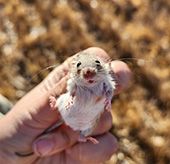
15 April 2024, Mouse monitoring update #33
View Mouse monitoring update issue 33 for April.
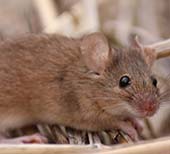
9 November 2023, Mouse monitoring update #32
View Mouse monitoring update issue 32 for November.
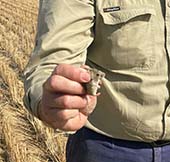
16 August 2023, Mouse monitoring update #31
View Mouse monitoring update issue 31 for August.
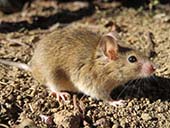
30 Apr 2023, Mouse monitoring update #30
View Mouse monitoring update issue 30 for April.
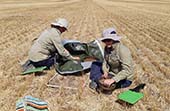
6 Apr 2023, Growers urged to check paddocks among reports of widespread mouse infestations
Grain growers are being urged to check their paddocks for signs of mouse activity as reports of infestations emerge.
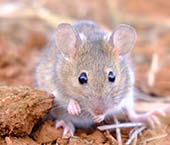
16 Jan 2023, Mouse bait online training course
Grain growers can now access online stewardship training and reporting programs that have been introduced to support best practice application of ZP50 mouse bait products.

Control now a year-round activity
Until recently, explosions in mouse populations in grain-growing areas were often followed by population crashes and consecutive years of little activity and damage. However, mice now appear to have become a more persistent problem with base populations carrying over from one year to the next.
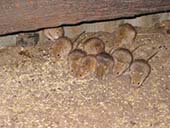
Know your mouse numbers
Growers should monitor paddocks to get an accurate idea of their mouse problem as numbers can vary significantly within a district. Monitor by walking a transect of 100 metres across the crop and counting active holes in a 1-metre-wide strip (gives an area assessed of 100 square metres).

Baiting
Mouse baiting should be conducted as soon as practical after seeding to maximise efficacy and minimise crop damage. There are a number of different approaches growers can take when it comes to spreading mouse bait, depending on the equipment they have.
GroundCover
- 23 May 2022, Maintain vigilance to protect winter crops from mice
- 8 Apr 2022, CSIRO tours address mouse control in WA’s regions
- 24 Jan 2022, GRDC invests in better mouse management for WA growers ahead of increased activity
- 4 Dec 2021, Genetic detective on the mouse trail
- 1 Nov 2021, Doubling down on bait to reduce mouse numbers
- 11 Aug 2021, Mallee on high alert for mouse outbreak this season
- 9 Aug 2021, Growers urged to keep monitoring mouse numbers
- 30 Jul 2021,WA growers urged to check crops for mouse damage
- 11 May 2021, Research prompts increase to recommended mouse bait concentrations
- 26 March 2021, Residual food reduction needed so mice take the bait
- 18 Feb 2021, Growers urged to drive down mouse populations with hostile approach
- 29 Jan 2021, Special forum convened to address worsening mouse issue
- 13 Dec 2020, Growers urged to bait before planting as mouse numbers rise
- 27 Nov 2020, Minimise mouse risk by reducing food source load this harvest
GRDC publications
- Tips and Tactics: Better Mouse Management (19 June 2019)
- GRDC Mouse Chew Card (PDF)
- GRDC Mouse Chew Card (JPEG)
Update papers
Videos and podcasts
- GRDC Grains Research Update, online – Mouse update – spring management in winter crops and in the lead up to summer crop sowing
- Controlling mice during the 2021-22 cropping season
- Mouse Management Online Workshop – Western Region
- Mouse Management Workshop - May 2021
- CSIRO mouse expert, Steve Henry presents: Mouse Plague Update (Pt 1)
- Mouse Plague Update (Pt 2) - 29 Apr 2021
- GRDC Mouse Control Webinar, hosted by GRDC
- Q&A from webinar
- mouse control webinar video - 28 March 2020
- Options for mouse bait application - part 1 of Mouse Control: Practical tips on baiting set-u - 2 May 2018
- Mice Control - a challenge for conservation farming - 20 Aug 2012
Was this page helpful?
YOUR FEEDBACK
